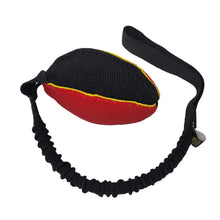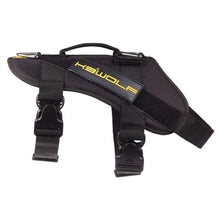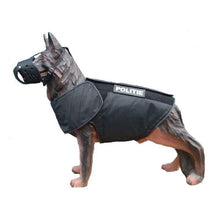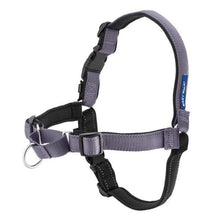Emergency Preparedness: Creating A Disaster Plan For Your Dog's Safety and Well-Being

You love your dog and want to give them the best life possible. So, you feed them healthy food, take them to the vet when you need to, provide them with plenty of exercise, and give them lots of love and affection.
Caring for them also means planning for the unexpected to ensure their safety and well-being. One way to help achieve this is to make a disaster plan before you need it. No one likes to think about what will happen to their dog during an emergency, but it’s an important part of pet ownership.
Having a disaster plan is one of the best ways to ensure your dog is protected. It may even save their life. If you don’t already have a plan, here are some tips on how to prepare and what to include in yours:

How to Help Your Dog Handle a Disaster
• Socialization
If you need to hear one more reason why it’s important to socialize your German shepherd, it’s so they are easy to travel with, board, and feel comfortable in a variety of situations, such as what you might face during a disaster (when they are likely to be around strange people and animals).
• Basic training
Just as important as socialization, basic training is a must for your dog. It will be much easier for you, a friend, or even a stranger to handle your dog during an emergency if they have mastered basic obedience skills, such as heel, sit, stay, and come.
• Crate training
Even if you don’t believe in crating, teaching your dog to be comfortable in a crate is a great way to help protect them during a disaster or while recovering from an illness or injury. If your dog is comfortable while crated, it makes it much easier to contain, transport, and board them during any type of emergency.

Plan Ahead for a Disaster
• Plan your evacuation route
If you have to evacuate your home, it’s not safe for your dog to be left behind either. So, be sure you plan your evacuation route to include pet-friendly hotels and find out what pet restrictions they have ahead of time since websites may contain inaccurate or incomplete pet policy information.
According to the American Red Cross, most of their shelters don’t accept pets, unless they are service animals, so relying on them may not be an ideal solution. Along with hotels and motels, additional housing options to consider during an emergency may include boarding facilities, veterinarian offices, friends, and family.
• Write down the information and take it with you
Be sure you write down the names, addresses, and phone numbers for all your disaster-related contact information so that you can take it with you in case your phone battery is dead or you don’t have cell phone service.

• Practice loading up your dog and all your gear, just like a fire drill.
Practice loading up your dog and all your gear in your vehicle to be sure you’re comfortable and can do it quickly and efficiently. This will also help you figure out how you’re going to quickly fit everything you’ll want to take with you and get your dog comfortable with the process.
• Ensure your pet’s ID is up-to-date
Be sure your dog’s microchip and pet tag information is current with your cell phone numbers. If possible, include a prearranged emergency contact.
• Develop a buddy system
Consider what you’ll do if your dog needs to be evacuated and you’re not home. Talk to your friends and neighbors and make a plan to help each other evacuate pets if one of you isn’t home.

What to Bring with You in an Emergency
Being prepared to quickly leave your home during any type of emergency helps reduce stress and will help to prevent you from forgetting something important. Some things to consider taking with you include:
• Your pet’s vaccination and medical records
At minimum, you’ll want to bring your dog’s vaccination records with you. However, additional medical records may be helpful if your dog has any health concerns. Be sure you have your veterinarian’s name, address, and phone number handy in case you don’t have access to the internet or cellular service.
• Pet medications, supplements
Bring your dog’s medications in the original bottles. Include a list of their medications and dosing directions. This is helpful in case you don’t have their medication with you, it gets lost, or you run out. If you need to refill medications, contact your vet to see if they can be called into a pharmacy near you. Otherwise, you may have to see another vet.

• Pack a Go Bag for your Dog
Make a waterproof kit that contains everything you’ll need for your dog. If you don’t have a waterproof bag, be sure to protect the items inside in zip-lock bags or plastic. Some things to put in your dog’s Go Bag include:
• Leash, harness, collar with tags
• Medications, supplements
• Copies of vaccination, medical records, and vet contact information
• Who to contact in case of emergency
• Written directions on feeding times, medical problems, medication schedule, behavior issues, etc
• Food and water for at least 3 days
• Treats
• Food and water dishes
• Measuring cup, can opener, spoons
• Good photo of you and your dog together to prove they belong to you in case you get separated
• Bedding
• Poop bags
• Wet wipes
• Wash clothes, towel
• First aid kit
• Basket muzzle
• Paw protection
• Shampoo
• Grooming tools
• Crate/kennel
If your dog doesn’t travel in a kennel, bring a collapsible one with you.
In Case the Worst Happens
Consider what will happen to your pet if something happens to you are you’re not available to care for them. Talk to a trusted family member, friend, or caretaker and ask if they are willing to care for your dog if you are ill, injured, or pass away.

Be sure your caretaker (and preferably an alternate) is willing to care for your dog long-term. Talk to your attorney, executor, and include written directions in your estate planning, along with any financial provisions, so that your plans are clear and the people close to you know them.
Having a plan in place for you and your dog will help reduce some of the stress and worry you’ll encounter during an emergency. It’s important to figure out how you’ll include your dog in your evacuation plan since pets left behind end up lost, injured, or worse.
We hope this information helps you be more prepared. As always, please feel free to share with your friends.
You might also like: How To Make A Go Bag For Your Dog
























